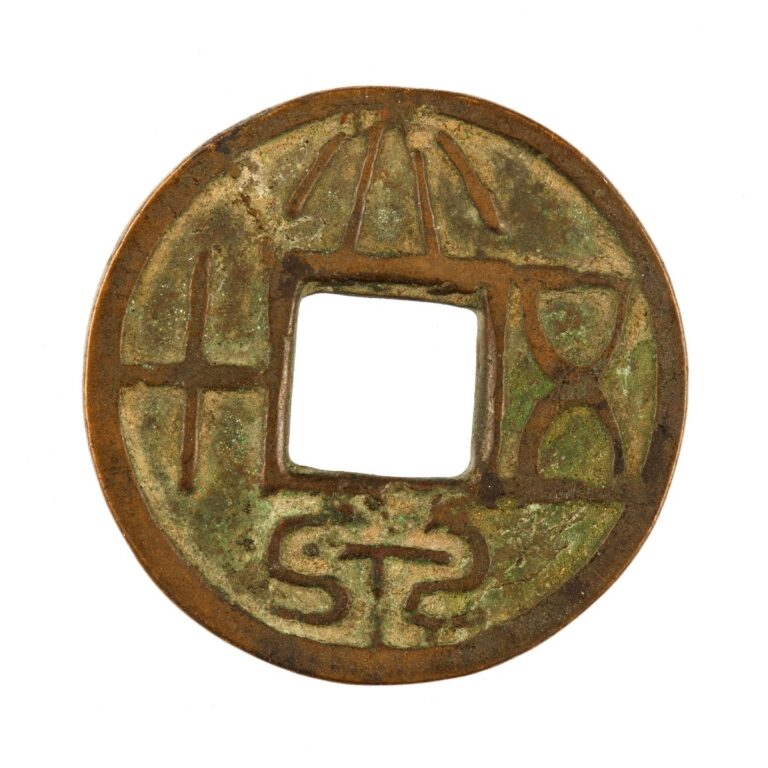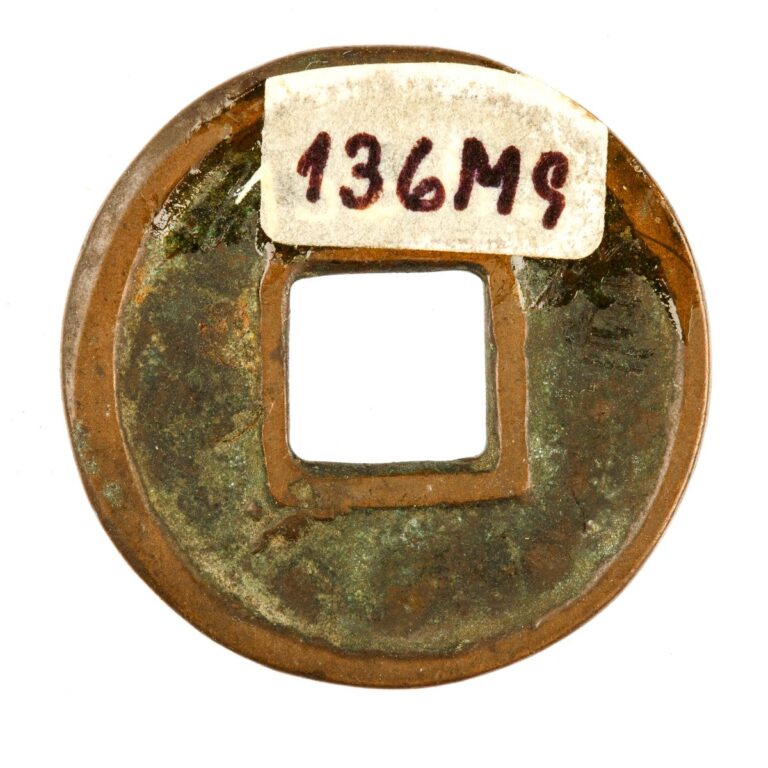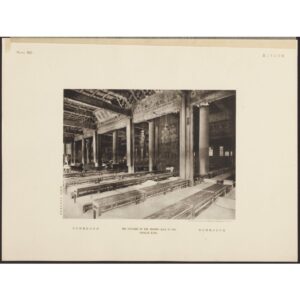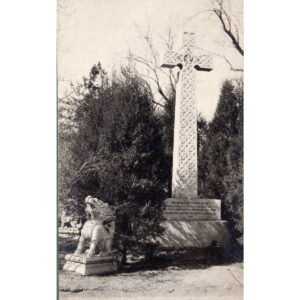Coin daquan
The coin shown here is a numismatic rarity, as it dates from the brief reign of Wang Mang 王莽 (45–23 B.C.), who after the fall of the Western Han Dynasty (206 B.C.–A.D. 8 ) briefly ruled over its territory. He was the nephew of Empress Wang 王 (71 B.C.–A.D. 13, widow of Emperor Hanyuan 漢元 (75–33 B.C.)) and was appointed regent to the barely two-year-old Emperor Ruzi 孺子 (5–25) in year 7. In year 9, he ascended the throne, founding the short-lived Xin 新 Dynasty (9–23). While some see him as a great visionary and reformer who took land away from large landowners and influential families, nationalised it, and distributed it to peasants, others characterise him primarily as a usurper and autocrat. During his short reign, however, he carried out a series of far-reaching and extremely ambitious social, political, and economic reforms, including monetary ones. He revived several coin designs from the Warring States Period (475–221 B.C.). His most famous coins are ... more
The coin shown here is a numismatic rarity, as it dates from the brief reign of Wang Mang 王莽 (45–23 B.C.), who after the fall of the Western Han Dynasty (206 B.C.–A.D. 8 ) briefly ruled over its territory. He was the nephew of Empress Wang 王 (71 B.C.–A.D. 13, widow of Emperor Hanyuan 漢元 (75–33 B.C.)) and was appointed regent to the barely two-year-old Emperor Ruzi 孺子 (5–25) in year 7. In year 9, he ascended the throne, founding the short-lived Xin 新 Dynasty (9–23). While some see him as a great visionary and reformer who took land away from large landowners and influential families, nationalised it, and distributed it to peasants, others characterise him primarily as a usurper and autocrat. During his short reign, however, he carried out a series of far-reaching and extremely ambitious social, political, and economic reforms, including monetary ones. He revived several coin designs from the Warring States Period (475–221 B.C.). His most famous coins are shaped like a shovel (bubi 布幣) and a knife (daobi 刀幣), more reminiscent of a key. In addition to the wuzhu 五銖 coin (five zhu 銖 or 3.25 grams) from the previous Qin (221–206 B.C.) and the Western Han dynasties, which remained in use as the basic monetary unit, he also issued large coins daquan wushi 大泉五十, as seen here, in the photo. Daquan wushi means “large coin worth fifty”, which tells us that these coins were worth 50 wuzhu each. (MG)







































Do you have a comment or additional information about the subject?